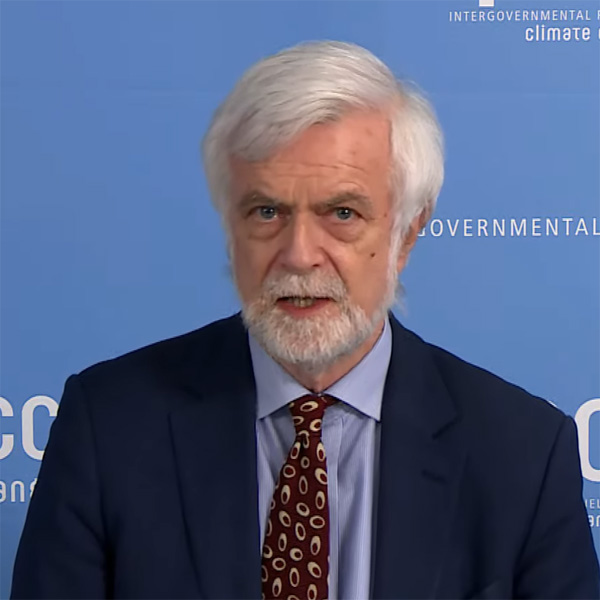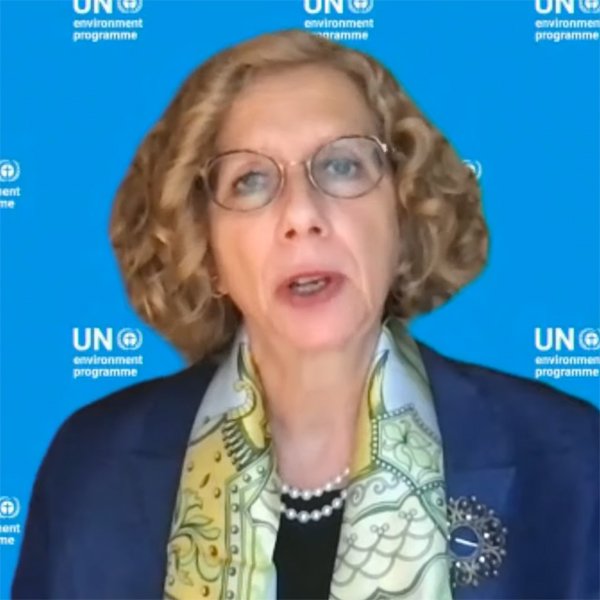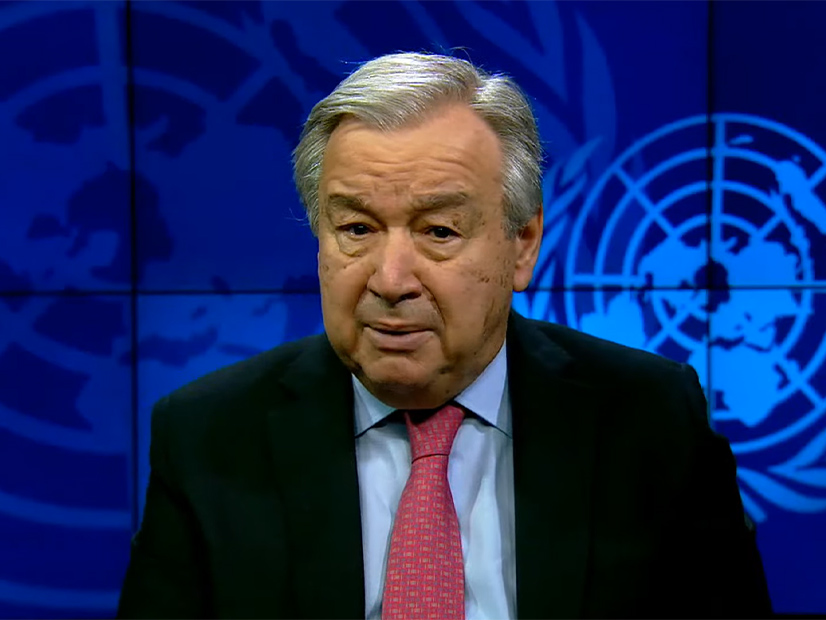The world must quickly and radically cut its dependence on fossil fuels or face climate disaster, according to the latest report released Monday by the United Nations Intergovernmental Panel on Climate Change (IPCC).
 Diana Ürge-Vorsatz, IPCC Working Group III vice-chair | IPCC
Diana Ürge-Vorsatz, IPCC Working Group III vice-chair | IPCCTo even have a chance of limiting global temperature rise to 1.5-degrees Centigrade, the report’s 278 authors say, carbon emissions will have to peak by 2025 and drop, quickly and sharply, 43% by 2030.
“Investing in new fossil fuel infrastructure is moral and economic madness,” UN Secretary-General António Guterres, said in a blistering statement delivered during the online launch of the report.
“Such investments will soon be stranded assets that [are a] blot on the landscape and the blight on investment portfolios.”
Diana Ürge-Vorsatz, a vice-chair of the working group that produced the report, estimated that existing investment in fossil fuels, as of October 2021, could result in $1 trillion to $4 trillion in stranded assets in coming years.
 Jim Skea, IPCC Working Group III co-chair | IPCC
Jim Skea, IPCC Working Group III co-chair | IPCC“This is a climate emergency,” Guterres said. “Climate scientists warned that we are already perilously close to tipping points that could lead to cascading and irreversible climate impacts. We think governments and corporations are not just turning a blind eye, they are adding fuel to the flames. They are choking our planet based on their vested interests and historic investments in fossil fuels when cheaper, renewable solutions provide green jobs, energy security and greater price stability.”
The report, the third and final installment of the IPCC’s Sixth Assessment Report, focuses on climate mitigation measures — from renewables to reforestation and carbon dioxide removal (CDR) technologies — that, it says, must be implemented immediately to slow and eventually reverse the catastrophic impacts of climate change.
“We conclude that without strengthening mitigation efforts, greenhouse gas emissions are projected to lead to warming of 3.2 degrees,” said Jim Skea, co-chair of the working group. “The temperature will stabilize when we reach net-zero carbon emissions.”
Other key numbers in Skea’s opening remarks at the launch event included:
- As of 2019, GHG emissions were at their highest level in human history — 12% higher than in 2010, the biggest 10-year increase on record, and 54% higher than in 1990. However, increasing climate action is slowing emissions growth, from 2.1% per year in the first decade of the 21st century to 1.3% per year from 2010 to 2019.
- The decline was particularly noticeable in the energy and industry sectors, where the rate of growth has more than halved.
- Climate laws that resulted in reduced or avoided emissions are on the books in 56 countries, which together represent more than half of all global GHG emissions.
- Ongoing price cuts across the renewable energy sector since 2010 — 85% for solar, 55% for wind and 85% for batteries — have led to increases in installed capacity.
The various pathways laid out in the report are by now familiar to the U.S. and global energy industry, with options available in every sector “that can at least halve emissions by 2030 and keep open the possibility of limiting warming to 1.5 degrees,” said Ürge-Vorsatz.
For example, beyond reducing fossil fuels and increasing renewables, “energy efficiency and reductions in energy consumption can be achieved using digital technologies,” she said. “In this way, it is also possible to decentralize an energy network so that power comes from multiple, localized energy networks rather than one main electricity grid.”
“There is untapped potential here to bring down global emissions between 40% and 70% by 2050, but only if the necessary policies, infrastructure and technologies are in place,” she said.
Ürge-Vorsatz also talked up electrification of transportation and buildings, energy efficient retrofits for existing buildings and tackling hard-to-decarbonize industrial emissions via efficiency, recycling and minimizing waste, along with carbon capture and use of hydrogen.
Political Willingness
The other two reports in the Sixth Assessment have provided equally strong numbers and dire warnings on the need for action. Issued in February, the second report looked at climate adaptation measures, while the first provided a deep dive into the science of climate change. (See IPCC Climate Report: ‘Half Measures No Longer an Option.’)
A “synthesis report” combining the findings of all three will be issued later this year, IPCC Chair Hoesung Lee said.
But the key challenge lies not in the science or the technology, as Guterres acknowledged, but in the political and financial willingness to commit to immediate action, especially in the midst of the global inflation and rising fuel prices caused by the combined impacts of the COVID-19 pandemic and the war in Ukraine.
 IPCC Chair Hoesung Lee | IPCC
IPCC Chair Hoesung Lee | IPCCThe report warns that “the continued installation of unabated fossil fuel infrastructure will ‘lock in’ GHG emissions.” According to a footnote, sufficiently abating fossil fuel emissions will require technologies that capture more than 90% of power plant emissions and 50%-80% of “fugitive methane emissions from energy supply.”
“We need to cut global emissions by 45% this decade,” Guterres said. “But current climate pledges would mean a 14% increase in emissions, and most major emitters are not taking the steps needed to fulfill even these inadequate promises.”
Climate politics played out in the release of the report, originally scheduled for 5 a.m. ET on Monday, but delayed six hours, according to multiple media reports, due to last-minute wrangling over the final wording in the Executive Summary for Policy Makers.
On the financing side, Ramón Pichs-Madruga, the working group’s other vice-chair, said that current “financial flows are a factor of three to six times lower” than what will be needed to halve emissions by 2030. “But there is sufficient global capital available … to close investment gaps.”
The ongoing failure of developed countries to meet the $100 billion of investment they promised to developing countries as part of the original Paris Agreement was a flashpoint at the UN Climate Change Conference in Glasgow in November.
As a result, “clear signals from government and the international community, including a strong alignment of public sector finance and policies is critically important,” Pichs-Madruga said, pointing to measures such as “broad-based carbon taxes and emission-trading systems,” that have already proved effective.
“Policy packages and economy-wide packages are better able to achieve systematic change than individual policy instruments on their own,” he said, calling for consensus building across disparate stakeholders.
“When talking about solutions, responding to climate change,” he said, “the starting point is thinking in terms of inclusive actions that consider not only the national governments but also in a variety of stakeholders, including, of course, the local community … but also participation of professional bodies, businesses and different stakeholders.”
Reactions
Whether this latest report will have a greater impact on U.S. or global action on climate change than its predecessors remains an open question. But environmental and energy groups in the U.S. framed their reactions to the report as putting pressure on Congress to pass the energy tax incentives from the derailed Build Back Better package — in particular for technologies such as carbon capture and nuclear.
 Inger Andersen, Executive Director, UN Environment Program | IPCC
Inger Andersen, Executive Director, UN Environment Program | IPCCMadelyn Morrison, external affairs manager for the Carbon Capture Coalition, said, “This consensus report underscores the critical role that carbon capture and removal technologies and infrastructure must play in managing emissions from existing industrial facilities and power plants, offsetting emissions from hard-to-abate heavy industry, aviation and other sectors, and eventually removing legacy CO2 emissions from the atmosphere.
“Congress must deliver the full portfolio of federal policy support for carbon management in any forthcoming budget reconciliation legislation, including a direct pay option for the 45Q tax credit,” she said.
Armond Cohen, executive director of the Clean Air Task Force, praised the IPCC for “formally recognizing the importance of an advanced set of climate solutions like carbon capture, hydrogen and nuclear energy. This problem is bigger than any one sector or solution. It is a fundamental re-tooling of our energy system in record time and we’re going to need more options on the table, not fewer. It’s past time we acknowledge the full scope of the challenge and get to work advancing the full set of solutions we need to meet it.”
John Kotek, senior vice president of policy development and public affairs at the Nuclear Energy Institute, noted that the report calls for a doubling of global nuclear energy generation by 2050.
“We need strong policies that value nuclear energy in driving global economies and place nuclear on a level playing field with wind and solar technologies,” Kotek said. “Governments should also prioritize incentives to deploy new nuclear carbon-free plants, signaling to investors and global banks the significant role of nuclear energy in meeting our carbon-reduction goals.”
Daniel Bresette, executive director of the Environmental and Energy Study Institute, framed the report’s call to fight climate change as an opportunity, first and foremost, “to reduce our dependence on fossil fuels. … To chart this new path, we need a cohesive, coordinated set of policies that are complex and interconnected. This requires Congress to act to deliver these policies here in the United States and provide adequate, equitable financing and financial support for other countries.”



